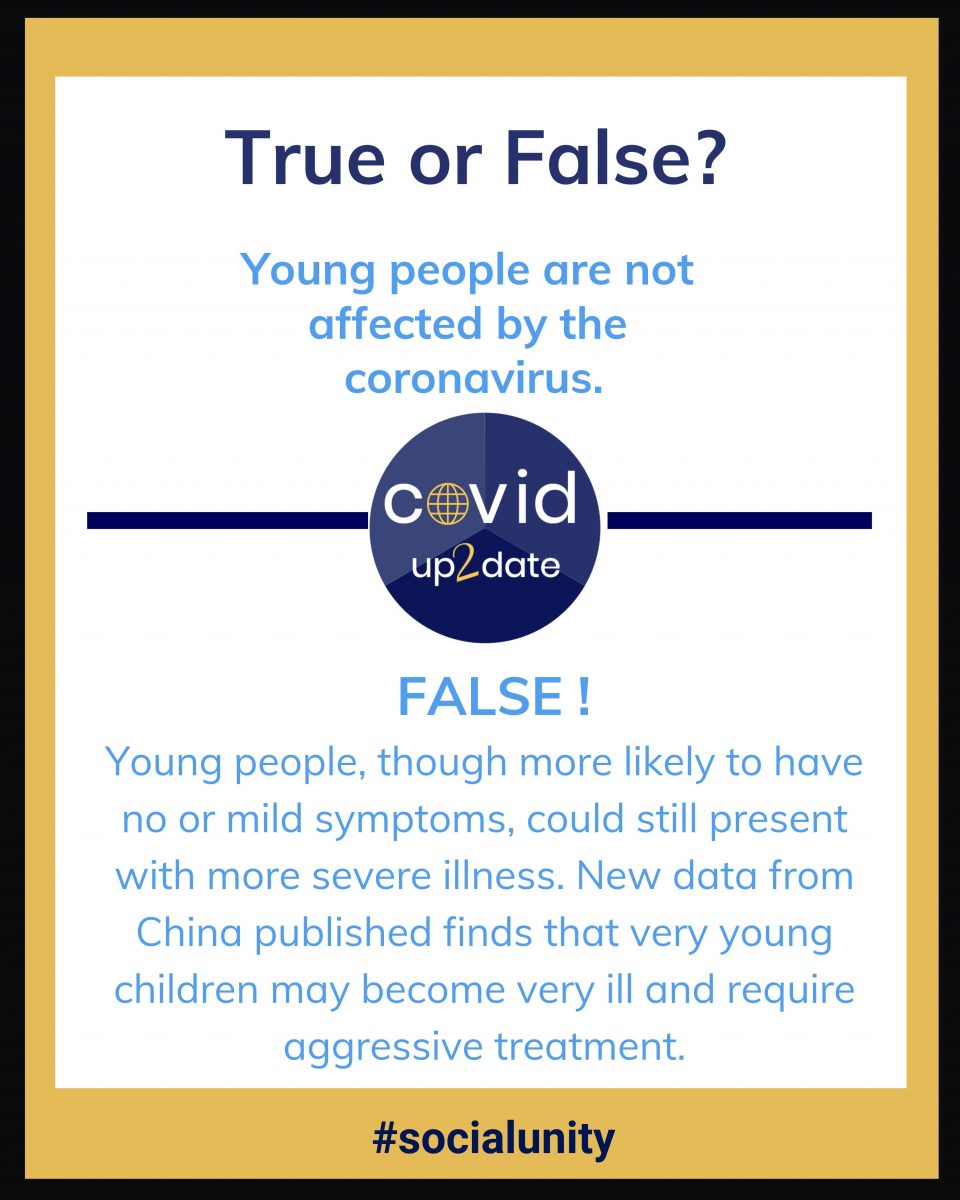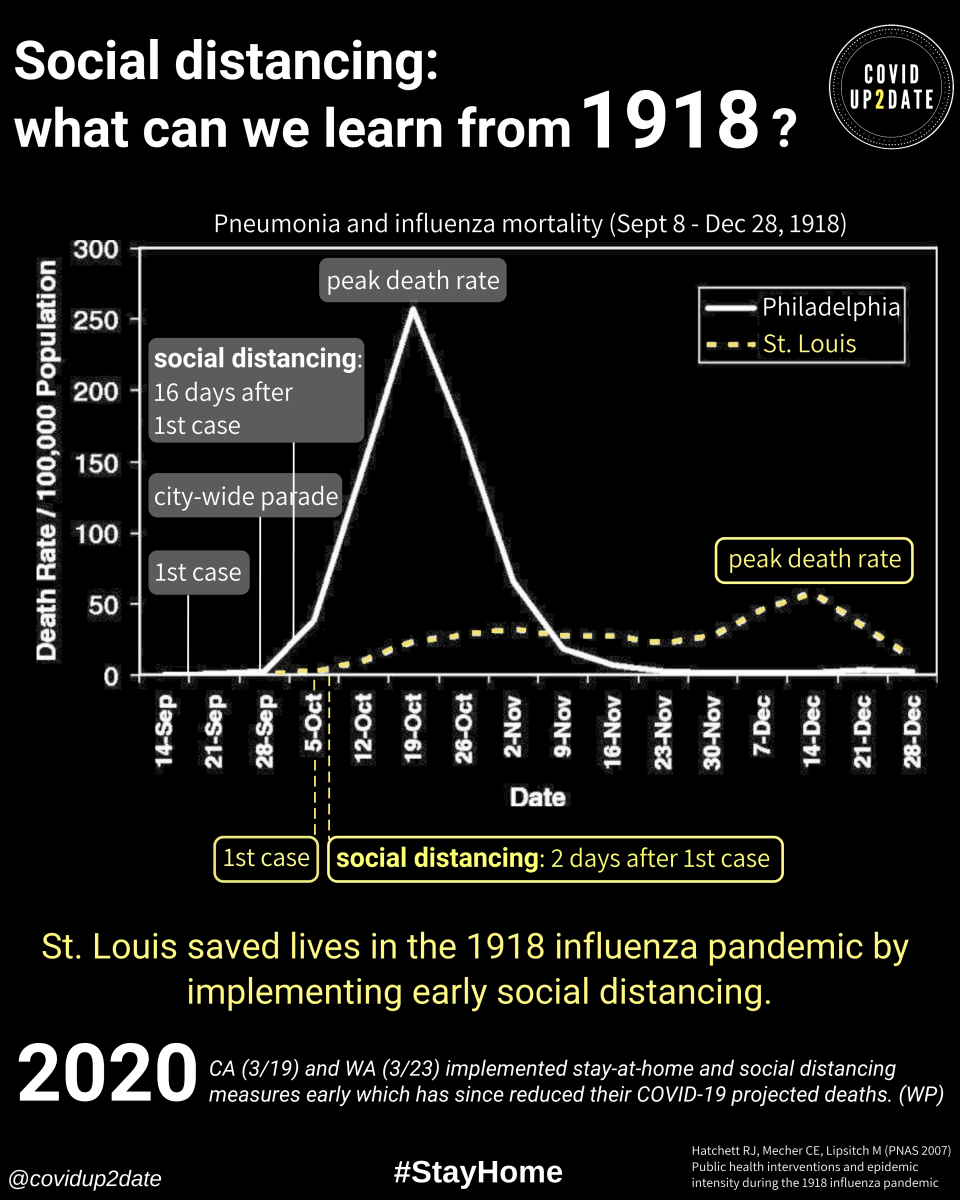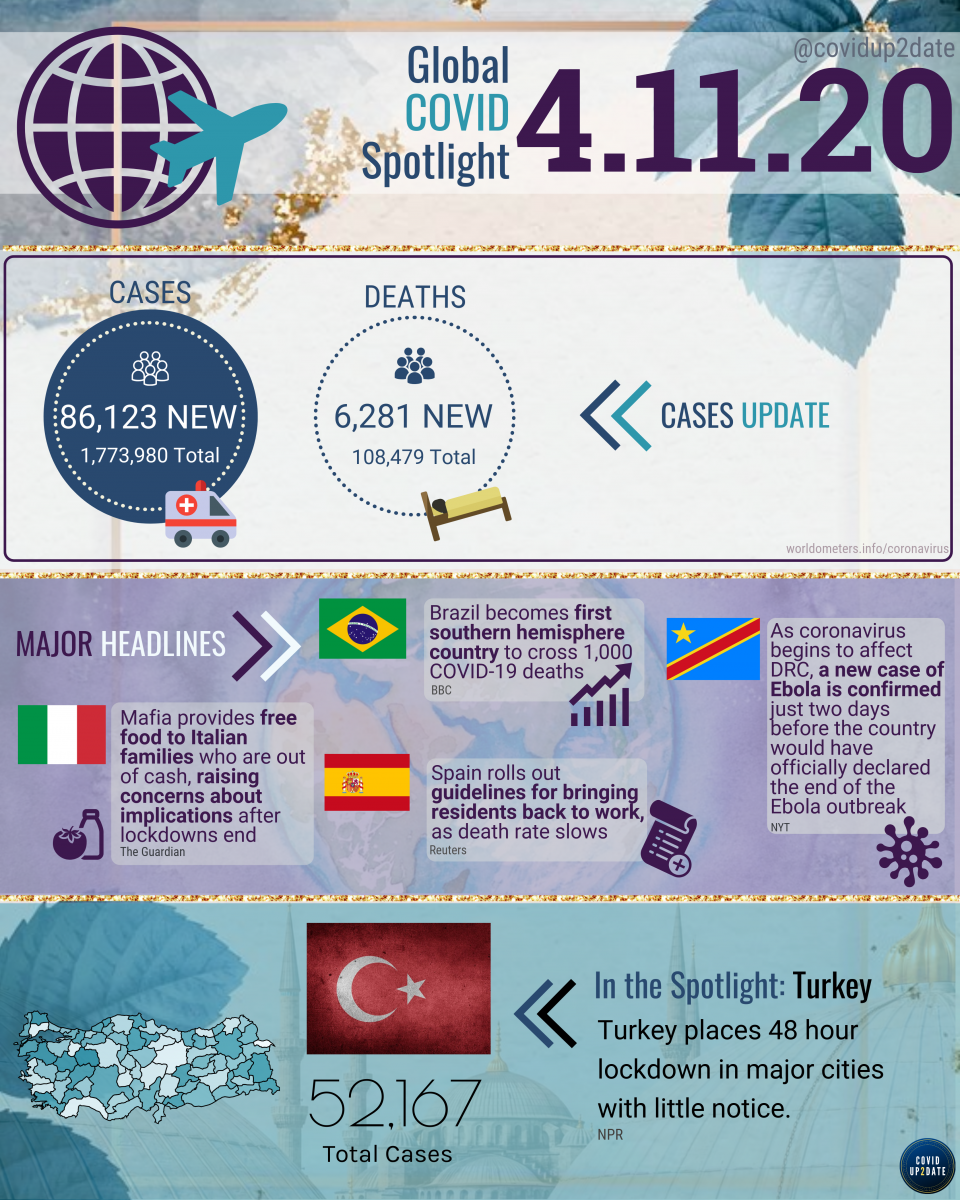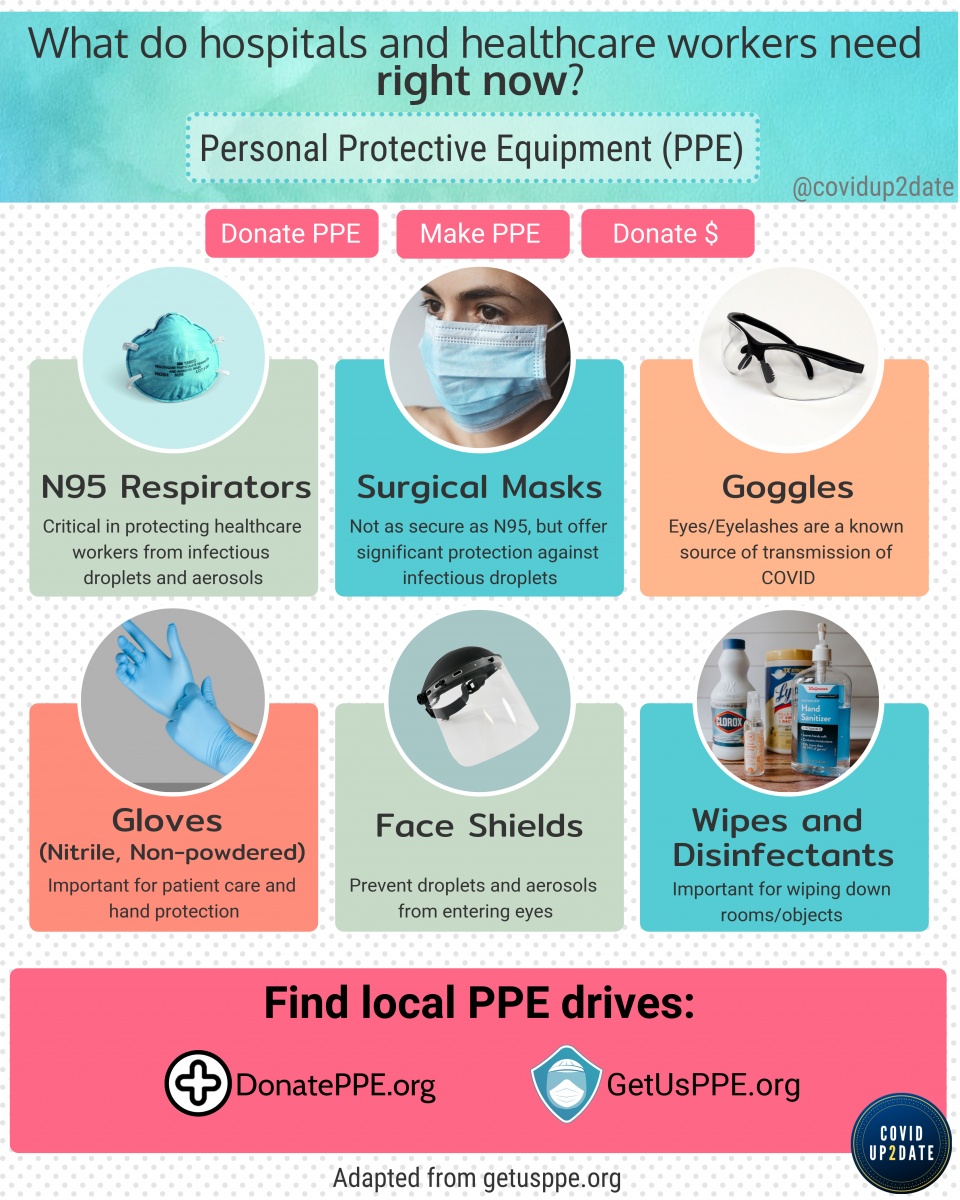Guest post by Neha Anand, a third-year medical student at the Johns Hopkins University School of Medicine.
When we received news from the Johns Hopkins University School of Medicine that medical student clerkships would be cancelled until further notice due to the escalating COVID-19 pandemic, my classmates and I felt devastated. Though we knew this important policy aimed to limit the spread of the virus and reserve personal protective equipment (PPE) for essential hospital staff, our roles as medical students were in question. No longer able to learn from patients on our rotations and contribute to their care, perhaps at a time when they needed it the most, we found ourselves yearning to stay involved, and most importantly, find a way to help.
We heard the news when we were scattered across the country on spring break. However, the distance didn’t stop us from coming together to form @covidup2date, a social media initiative that provides daily updates about the pandemic from reputable sources for the general public.
The idea for this initiative was born over a spontaneous midnight FaceTime call with a fellow classmate. We both expressed frustration that we could not be in Baltimore to support our community locally and that we were unlikely to return anytime soon. We felt overwhelmed by the sheer amount of rapidly evolving news and concerned about whether people could distinguish the rumors and false information circulating on social media from the facts. Inspired, we dialed in another classmate to figure out how to help provide the general public with factual, concise and relevant updates about the pandemic. We settled on creating infographics about COVID-19 news, both in the U.S. and globally, and debunking a myth each evening. We source our data from reputable resources such as the Centers for Disease Control and Prevention (CDC), World Health Organization, Johns Hopkins University and the Kaiser Family Foundation.
The next day, we scoured the news, looking for stories not heavily reported, and pieced together graphics for our first post. Our first myth was, “Young people are not affected by the coronavirus,” which we claimed as false after looking at the data. We had heard this message propagated in the initial media reports and knew it was a belief many people held. On March 18, both excited and nervous, we released the first post. Positive reviews from family and friends bolstered our motivation to keep going.
Less than a month later, @covidup2date has expanded immensely with over 2,500 followers. We have recruited almost 20 students not only from the Johns Hopkins University School of Medicine, but also University of Maryland, University of California San Francisco and Yale to research content and design graphics. In addition to our daily news and myths, we have posts highlighting scientific developments, economic news, ways to take action and individuals helping out during the crisis. It has been amazing to see how our team has harnessed our interests and talents to break down everything from new drug treatments to the value and necessity of social distancing. Messages and comments from followers expressing appreciation have been tremendously rewarding and have validated the need for easily shareable factual information.
We pull our information from a list of credible sources, which continues to expand as more resources emerge during the pandemic. In addition to the CDC, WHO, JHU and Kaiser Family Foundation, we use LitCovid and JAMA. We gather news from well-known, fact-based sources, such as the New York Times and BBC, and cross-check stories across multiple outlets. After a team member researches the content, another designs the infographic, which is then sent to our entire team for additional edits and suggestions. We’ve learned just how powerful the infographic format is to present material in an aesthetically appealing manner to both engage and educate our audience with information from reputable sources.
While we are no longer walking the halls of the wards, performing physical exams or working up plans for patients during this time, I believe we are still practicing the skills we have learned throughout medical school. With this initiative, we both apply and continue to expand our foundation of medical and public health knowledge. We have brought our attention to detail, ability to synthesize and scrutinize large volumes of information, and collective organizational skills to work as a team in creating this resource for the community that we serve. Furthermore, our compassion for everyone affected by the pandemic, whether physically, emotionally, or economically, drives us to improve the content we present every day.
The COVID-19 pandemic is an incredibly uncertain time for everyone. Some of the most valuable experiences thus far in my training have been helping patients cope with uncertainty. From these encounters, I have learned how unwavering support and empathy can help ease anxiety about the future and inspire a positive outlook. Similarly, our hope with @covidup2date, beyond bringing awareness to key issues during this pandemic, is to be a source of stability and solidarity for our followers as we take this uncertain time day by day.
To learn more about us, you can find our page on Facebook, Instagram and Twitter with the handle @covidup2date.
Resources:
- Coronavirus Disease 2019: Myth vs. Fact
- More information on Coronavirus from Johns Hopkins Medicine.
Neha Anand is a third-year medical student at the Johns Hopkins University School of Medicine and co-creator of @covidup2date, a social media account aimed at providing the public with concise daily updates about the COVID-19 pandemic. This piece was written on behalf of @covidup2date co-creators Lucy Nam and Allie Berges and team: Christine Gao, Brittany Tsou, Rohan Panaparambil, Eilrayna Gelyana, John Morkos, Inghu Siddharthan, Alyssa Schledwitz, Ashling Zhang, Terrence Tsou, Shannon Wongvibulsin, Felicia Chang, Jonlin Chen, Tony Kim, Thomas Le, Jennifer Chen, Ved Tanavde and Brandon Yan.
Want to read more from the Johns Hopkins School of Medicine? Subscribe to the Biomedical Odyssey blog and receive new posts directly in your inbox.





I am 85 and had mumps as a child. Am I protected from coronavirusJ
Hi, thanks for reaching out. For any concerns we recommend reaching out to your doctor. You can read all of our resources on Coronavirus here: https://www.hopkinsmedicine.org/coronavirus/index.html
With the summer months ahead, my question is: If a mosquito bites a Covid19 infected person & then bites an uninfected person, will that spread the virus to the healthy one? Also, with the "hot spots" in the midwest meat packing plants, with many workers infected who are cutting & packaging meat products....is it safe to buy that meat in the supermarket? Will cooking heat kill the virus?
How long does the covid-19 virus stay with infected patients after the symptoms are gone? I have heard that it is gone after 14 days.
Sincerely,
Jerry Case
I manage a small community cupboard that takes in donations of clothes and household items of all kinds. My volunteer workers are all 60+ many with health issues. We live in rural Colorado. How can I start implementing a plan to reopen our store when it is safe. Is there somewhere that I can get good information about how long the covid19 last on all the different surfaces and how to handle the customers if we get open in the next few months. Our hispanic culture in our area have not been good with social distancing wearing mask and not congregating. I am worried because our store customers are 80% hispanic, and use our store as a community meeting place. How can I get them to understand new rules to open?
How can I see your online meetings? I am so tired of information being posted on social media and has no credible backing.
I am interested in factual information stated by numerous doctors. I would like to share a website for my friends and family to go to for accurate information so they are not believing only what they hear on social media.
Corona virus patients with stress hyperglycemia have the highest mortality rate.The common factor among the patients is insulin resistance.These patients hourly blood glucose and insulin adjustment have a mortality rate of 3%.The mortality rate of poor control hyperglycemia was 75%. Glucose levels above normal increase the inflammatory state and causes cytokines storm.As glucose rises the immune system is subdued.Insulin is anti inflammatory and causes improvement of the immune response.Sliding scale insulin dosing does not work
Hi, good to know you’re there. Been taking 6 g daily of Ca-ascorbate thinking that I help my immune syst. Think is right? Or take 2 g more ? Can you recommend me a review paper on medical and social effects of Covid-19? I’m grateful 2 u.
Take good care
Hi, I am a medical student and our classe are cancealed, too. I'm interested to participate in the meeting or atleast as a guest. Thanks alot. Toktam
Pingback: Role Reversal: Getting Tested for COVID-19 – Biomedical Odyssey
Pingback: I'm ready for the change COVID-19 will bring | WebsFavourites.Com
Pingback: I am prepared for the change COVID-19 will deliver | NewsTimes247.com
Comments are closed.